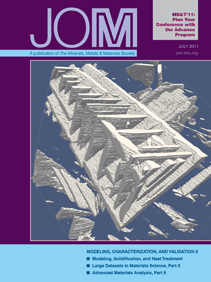 |
TMS ONLINE | TMS PUBLICATIONS | SITE MAP JOM Material Matters Articles in Full-Text Format: September 2005 |
Exploring traditional, innovative, and revolutionary issues in the minerals, metals, and materials fields. |
|||||
| OUR LATEST ISSUE | |||||
VISIT THE JOM COVER GALLERY
|
Understanding the Benefits Obtainable from “Related” United States Patent ApplicationsArnold B. SilvermanEfficient use of related U.S. patent applications can contribute to maximizing patent protection for an invention or a group of related inventions. Related applications may start with a single U.S. provisional application or a single U.S. traditional application which produces two or more patents as a result of the filing-related applications. Such related applications may be designated as traditional applications, divisional applications, continuation applications, or continuation-in-part applications. Among the requirements of all types of related applications is the need to file the later-filed related application during the pendency of the prior application to which it is related. Once the prior application matures into a patent, it is too late to rely on that prior application as a basis for a related application as the required “co-pendency” of the two applications cannot be achieved. Another common feature is that the later-filed or related application is entitled to the priority date of the earlier filed application to the extent that the subject matter disclosed in both is the same. It is also possible to have a series of related applications such that an original provisional application may become a related traditional application. This application is filed within one year of the filing of the provisional with a subsequent related application claiming priority from both the traditional application and the provisional application, thereby carrying the priority date back to the filing date of the original provisional application. The priority date can be of great importance. First, prior art that might be prior to the date of the actual filing of the related application could not be applied against the common subject matter of a prior application as the priority date of the prior application was before the effective date of the reference. Second, an earlier priority date achieved through the related application route can avoid forfeiture of rights to a patent, as for example, through a publication that might have occurred more than a year before filing the related application, but not more than a year prior to the ancestor or parent application with respect to which priority is claimed. A provisional application does not have to meet the requirements of a traditional application, but doing so minimizes the risk of partial loss of priority dates due to issues such as “new matter” introduced into the traditional, but not present in the provisional. The traditional application must be filed within one year after the filing of the provisional, or the provisional application lapses. The traditional application gets the benefit of the filing date and disclosure of the provisional application. A continuation application is a re-filing of the prior application with the identical disclosure or no addition of new matter. The claims may be different from the claims of the original parent application. Such applications are frequently filed to obtain additional time for prosecution or make changes in the claims. A continuation-in-part application generally involves re-filing an application with the original disclosure and the addition of new matter. The application obtains the benefit of the original priority date as to subject matter carried over from the prior application and the actual filing date of the continuation-in-part as to new matter entered. It is not necessary to abandon the prior application with respect to which the continuation-in-part relates, as that may be separately prosecuted, if desired. Another type of related application is a divisional application. This generally results from the U.S. Patent and Trademark Office (USPTO) concluding that a single application contains two or more independent and distinct inventions and requires that the applicant elect to pursue one of the inventions in the pending application. The applicant then has the option of filing a divisional application which will consist essentially of the original disclosure and claims to the invention that were not elected as the group to be prosecuted in the original or parent application. Frequently the USPTO will impose a restriction requirement that breaks the claims into more than two groups. When this occurs, if the applicant wishes to pursue the groups that are not pursued in the parent application, the applicant must either simultaneously file a number of divisional applications, each directed toward one of the non-elected groups, or file a single divisional application containing all of the non-elected groups. It is important to coordinate the prosecution of related applications in terms of claim coverage being sought, identification of prior art which must be disclosed to the USPTO, and verification that the coverage being sought is compatible with the available protection and the commercial objectives of the inventor or the inventor’s assignee. Arnold B. Silverman is chair of the Intellectual Property department and a member of Eckert Seamans Cherin & Mellott, LLC in Pittsburgh, Pennsylvania. |
Copyright © 2005 by The Minerals, Metals & Materials Society.
Direct questions about this or any other JOM page to jom@tms.org.
